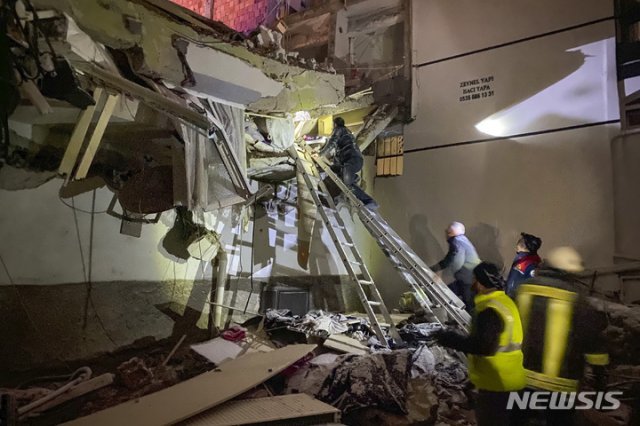“Every building collapsed and people were trapped. The current situation is catastrophic.”
An official of the Syrian militia called ‘White Helmets’ told the British Guardian on the 6th that it was a terrible situation at the time of the earthquake. At least 1,397 people were killed and more than 6,000 injured as of 1:00 p.m. As the earthquake occurred at 4:00 am, sleeping residents missed the opportunity to evacuate, and in Syria, the fact that rescue infrastructure is not functioning properly in the aftermath of civil war that has continued since 2011 increased the loss of life. Deteriorating local weather, such as heavy rain, heavy snow and strong winds, also makes rescue difficult.
Al Jazeera and others reported that the already poor local medical system is on the verge of collapse as the injured rush to the emergency room of each hospital. On social network services (SNS), images of residents crying out to find their families buried under the rubble of buildings after running out in pajamas, and videos of completely destroyed downtown are being uploaded one after another.
According to the Turkiye Disaster and Emergency Management Agency (AFAD), a strong earthquake occurred at 4:17 am on the same day about 33 km away from Gaziantep in the southeast, where about 2.1 million people live. Since then, dozens of aftershocks have continued in the nearby area. A 7.7 magnitude aftershock also occurred in the central region.
According to the New York Times (NYT), the force of a magnitude 7.8 earthquake is equivalent to 500 megatons of TNT. That’s equivalent to 32 atomic bombs dropped on Hiroshima, Japan during World War II. In 1939, 84 years ago, a 7.8-magnitude earthquake occurred in Erzincan, northern Turkey, killing more than 30,000 people. The United States Geological Survey (USGS) estimated the probability of 1,000 to 10,000 deaths from the quake as 31%. The probability of damage of more than 1 billion dollars (approximately 1.25 trillion won) was also predicted at 34%.
The depth of the epicenter (17.9 km) was shallow, aftershocks continued, and the earthquake occurred near a large city, increasing the damage. Gaziantep is a place where manufacturing, agriculture, leather craft, etc. are developed, so a significant blow to the Turkiye economy is expected. The structure is also not smooth. Most of the flights heading to the affected areas from the largest city Istanbul and the capital Ankara were canceled due to bad weather. In particular, in Gaziantep, after heavy snow fell, the temperature dropped significantly, and even those who survived are shivering in the cold.

According to Syrian authorities and local civic groups, at least 467 people have been killed and more than 670 injured in Syria. The Guardian predicted that the northern part of Idlib, which was mostly controlled by the rebels but constantly engaged in fighting with the government forces, would be the main affected area. Rebel-controlled cities such as Aleppo and Hama originally had poor medical facilities, and most of the residents were Kurds or displaced people. In the midst of this, major roads are cut off due to the earthquake, and it is difficult to supply water, electricity, and daily necessities, making it difficult for residents to suffer.
The White Helmets declared a state of emergency and appealed for help from the international community, saying, “We cannot even provide a safe shelter.” Government forces urged airstrikes to be suspended to prevent further tragedy.
Additional damage from aftershocks is also a concern. Some experts warned that we should be prepared for cracks in the dam and possible flooding. Major European countries that are relatively close to Turkey are also paying close attention. The Italian government issued and withdrew a tsunami warning for the southern coast shortly after the quake struck. However, residents along the coast were told to move to higher ground and wait for further notice from authorities.
Cairo =
Source: Donga
Mark Jones is a world traveler and journalist for News Rebeat. With a curious mind and a love of adventure, Mark brings a unique perspective to the latest global events and provides in-depth and thought-provoking coverage of the world at large.